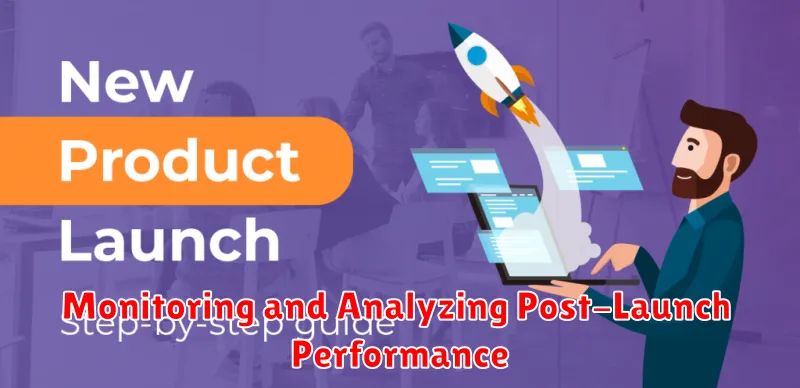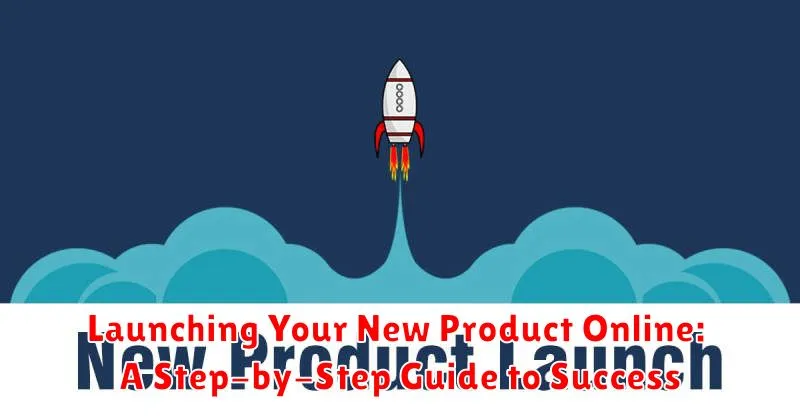Launching a new product online can feel like navigating uncharted territory. This comprehensive, step-by-step guide will equip you with the knowledge and resources you need to successfully launch your product and achieve your business goals. Whether you’re launching a new product in an established market or introducing a completely new innovation, understanding the key steps involved in a successful online product launch is crucial. This guide covers everything from initial market research and product development to effective marketing strategies and post-launch analysis. We’ll explore the essential elements of crafting a compelling product launch strategy that generates buzz, attracts your target audience, and ultimately drives sales.
From defining your target audience and crafting a unique value proposition to leveraging the power of social media marketing and building an engaged email list, we’ll delve into each stage of the product launch process. Learn how to effectively market your product online, optimize your online presence, and build a strong brand identity. By following the steps outlined in this guide, you’ll be well-prepared to launch your new product online with confidence and achieve a successful outcome. Prepare for a deep dive into the world of online product launches, and get ready to transform your product launch plan into a resounding success.
Defining Your Target Audience and Their Needs
Before launching your product, it’s crucial to define your target audience. Understanding their needs, preferences, and pain points will inform every aspect of your launch strategy, from marketing messaging to platform selection.
Start by creating detailed buyer personas. These are semi-fictional representations of your ideal customers. Consider demographics like age, location, income, and occupation. More importantly, delve into their psychographics: their values, interests, lifestyle, and motivations.
Key questions to consider when defining your target audience:
- What problem does your product solve for them?
- Where do they spend their time online?
- What are their purchasing habits?
- What influences their buying decisions?
Conduct thorough market research using surveys, interviews, and competitor analysis to gather data and validate your assumptions. This information will empower you to tailor your marketing efforts and effectively reach the right people with the right message.
Crafting a Compelling Product Story
A compelling product story goes beyond simply listing features. It connects with your audience on an emotional level, explaining why your product matters. It answers the question: What problem does your product solve and why should your audience care?
Start by identifying your product’s core value proposition. What makes it unique and beneficial? Frame this value within a narrative that resonates with your target audience’s needs and aspirations. Consider incorporating elements such as:
- The origin of your product idea.
- The challenges you overcame in developing it.
- The positive impact it has on users’ lives.
Authenticity is key. Share your genuine passion and the story behind your product’s creation. A compelling narrative will not only differentiate your product but also build trust and foster a deeper connection with your audience, ultimately driving sales and brand loyalty.
Building Pre-Launch Buzz and Excitement
Generating pre-launch buzz is crucial for a successful product launch. It builds anticipation and primes your target audience for purchase. A well-executed pre-launch campaign can significantly impact your initial sales and overall product performance.
Leverage social media to create a sense of anticipation. Tease product features, share behind-the-scenes glimpses of development, and run contests or giveaways to engage your followers. Encourage user-generated content by asking for their thoughts or ideas related to your product.
Reach out to influencers in your niche to review or promote your product before launch. Their endorsement can generate significant interest and credibility.
Early bird discounts or exclusive pre-order bonuses can incentivize early adoption and create a sense of urgency.
Build an email list and offer exclusive sneak peeks and updates to subscribers. This allows you to directly communicate with potential customers and cultivate a loyal following before the product even hits the market.
Creating High-Quality Product Images and Videos
Visuals are crucial for attracting online customers. High-quality images and videos showcase your product’s features, benefits, and overall appeal. Invest in professional photography or videography if possible, or learn to create compelling visuals yourself.
For product images, use a clean, consistent background and good lighting. Capture different angles and showcase important details. Consider lifestyle shots that depict your product in use.
Videos offer an even more engaging way to present your product. Create short, informative videos demonstrating its functionality, highlighting its benefits, and addressing potential customer questions. Keep videos concise and focused on the value proposition.
Ensure your visuals are optimized for web use. This includes appropriate file formats, sizing, and resolution for fast loading times without sacrificing quality.
Choosing the Right Online Platforms to Sell Your Product
Selecting the right online platforms is crucial for reaching your target audience and maximizing sales. Consider these key factors when making your decision:
Target Audience
Where does your ideal customer spend their time online? Understanding your target audience’s online behavior is the first step. Are they active on social media platforms like Instagram or Facebook? Do they prefer online marketplaces like Etsy or Amazon? Or are they more likely to purchase directly from a brand’s website?
Product Type
The nature of your product will influence platform suitability. Handmade or unique items might thrive on Etsy, while mass-produced goods could be better suited for Amazon. Digital products or services might benefit from a dedicated platform or your own website.
Budget and Resources
Factor in the costs associated with each platform. Some marketplaces charge listing fees or commissions, while others require monthly subscriptions. Consider your budget and the resources you have available to manage sales and fulfillment across different platforms.
Pricing Your Product Competitively
Setting the right price is crucial for attracting customers and maximizing profitability. Competitive pricing requires careful consideration of several factors.
Firstly, understand your costs. Calculate all expenses involved in production, packaging, and distribution to determine your break-even point. This is the minimum price at which you can sell without incurring a loss.
Next, research your competitors. Analyze their pricing strategies for similar products. This provides valuable insights into market expectations and helps you position your product accordingly.
Consider your target audience and their perceived value of your product. A premium product aimed at a discerning market can command a higher price. Conversely, a budget-friendly product needs a competitive price to attract price-sensitive customers.
Finally, choose a pricing strategy. Cost-plus pricing adds a markup to your production costs. Value-based pricing focuses on the perceived value to the customer. Competitive pricing aligns your price with market rates.
Developing a Marketing Strategy for Launch Day
A well-defined marketing strategy is crucial for a successful product launch. This strategy should generate excitement and drive initial sales.
Pre-launch buzz is key. Utilize social media platforms to tease the product and build anticipation. Consider influencer marketing to reach a wider audience. Engage with your existing customer base through email marketing, offering exclusive previews or early bird discounts.
On launch day, focus on visibility. A coordinated social media campaign across all platforms is essential. Run targeted online advertising campaigns to reach potential customers. Issue a press release announcing your new product to relevant media outlets.
Prepare for customer interaction. Ensure your customer service team is ready to handle inquiries. Monitor social media channels and respond promptly to comments and questions.
Monitoring and Analyzing Post-Launch Performance

After your product launch, consistent monitoring and analysis are crucial for understanding its performance and making necessary adjustments. Track key metrics to gain insights into your launch success.
Website Traffic: Monitor the number of visitors to your product page. A sudden spike indicates successful initial outreach. Sustained traffic shows continued interest. Analyze traffic sources to understand which marketing channels are most effective.
Sales Data: Track your sales figures closely. This is the most direct measure of your launch’s success. Analyze sales trends to identify any unexpected peaks or dips. Compare actual sales with projected sales to assess performance against goals.
Customer Feedback: Collect customer reviews and feedback through surveys, social media, or direct contact. This qualitative data provides valuable insights into customer satisfaction and areas for improvement.
Conversion Rates: Monitor the percentage of visitors who complete a desired action, such as adding the product to their cart or making a purchase. Low conversion rates might indicate issues with the website, pricing, or product itself.
Tips for a Successful Product Launch

A successful product launch hinges on careful planning and execution. Here are a few tips to ensure yours goes smoothly:
Build Anticipation
Generate excitement before launch day. Use teaser campaigns on social media and email marketing to build anticipation and create a buzz around your product.
Offer Early Bird Incentives
Reward early adopters with exclusive discounts or bonuses. This not only drives initial sales but also generates valuable feedback and testimonials.
Prepare for High Traffic
Ensure your website and servers can handle a surge in traffic. Stress test your systems before launch day to avoid technical issues that could negatively impact the customer experience.
Provide Excellent Customer Service
Be ready to address customer inquiries promptly and efficiently. Exceptional customer service from the start builds trust and fosters positive word-of-mouth marketing.

